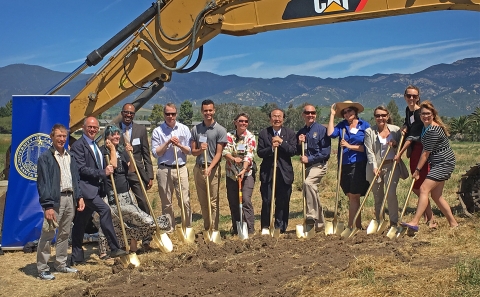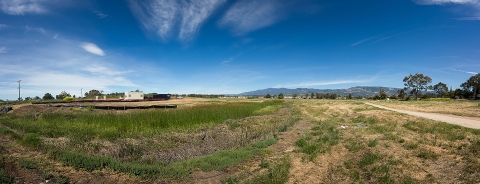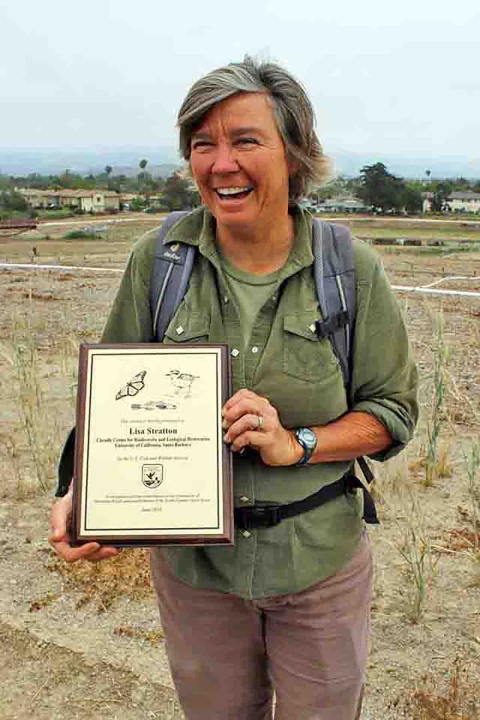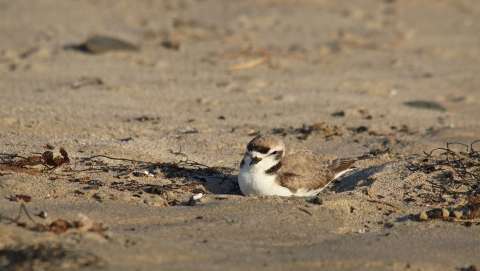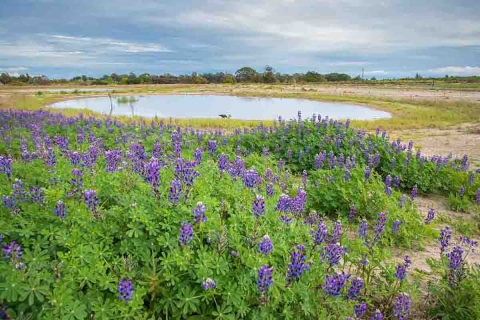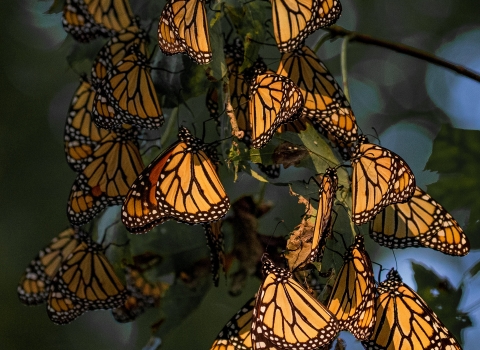“Restoration of Devereux Slough...is a conservation wonder and a great opportunity to illustrate how the Service works with the states and their conservation partners to bring wildlife assets back to communities. These grants are so exciting because you can see and feel the benefits to wildlife and to people. This one in particular is one of my favorites. Located on the campus of a major university, this project is habitat, connectivity, community protection, open space, a nature classroom and a learning laboratory, all in one.
– LARRY RILEY, REGIONAL CHIEF,
WILDLIFE & SPORT FISH RESTORATION PROGRAM
By Ashley McConnell
A “chance to turn the clock back.”
That’s how Carla Frisk described a recent effort to transform a former seaside golf course in Santa Barbara, California into a functional wetlands community.
Frisk, a former project coordinator with The Trust for Public Land, was enthralled with the 64-acre restoration project effort, which will provide recreational opportunities, pristine wildlife habitat and educational opportunities for students, residents, and visitors at the UC Santa Barbara campus. “California has lost something like 95 to 96 percent of its coastal wetlands. It’s just almost unheard of that you get a chance to turn even 64 acres back,” Frisk said.
In the 1960s a portion of the wetlands community of Devereux Slough was filled in to make way for the Ocean Meadows Golf Course. Now, with the help of grant funding from the U.S. Fish and Wildlife Service and multiple state and local partners, permanently protected wetlands are being created within the 100-acre North Campus Open Space.
“This is the type of project that is the pinnacle of a restoration ecologist’s life,” said Dr. Lisa Stratton, director of ecosystem management at the University of California, Santa Barbara’s Cheadle Center for Biodiversity and Ecological Restoration.
“Restoration of Devereux Slough, incorporating it as a part of the UCSB campus, is a conservation wonder and a great opportunity to illustrate how the Service works with the states and their conservation partners to bring wildlife assets back to communities,” said Larry Riley, regional chief of the Service’s Wildlife and Sport Fish Restoration Program. “These grants are so exciting because you can see and feel the benefits to wildlife and to people. This one in particular is one of my favorites. Located on the campus of a major university, this project is habitat, connectivity, community protection, open space, a nature classroom and a learning laboratory, all in one.”
Conservation partners broke ground on the project in spring 2017 and opened trails to the public in October 2018.
Restoration planning by staff, students, and volunteers will continue through 2019 and the site will officially be dedicated in spring 2020. The area will boast more than 100 acres of salt marsh salt marsh
Salt marshes are found in tidal areas near the coast, where freshwater mixes with saltwater.
Learn more about salt marsh , grasslands, sage scrub, vernal wetlands, and walking trails.
The former golf course created a flooding risk for nearby homes and businesses during heavy rain years. By creating a natural wetland system, the slough area has already demonstrated its capacity to retain rainwater that would otherwise cause flooding in neighboring communities.
By ‘rearranging’ some 350,000 cubic yards of soil (the fill that made up the golf course), the natural function of the slough and upland vernal pool habitats are restored.
“After just two feet of sea level rise, the system will become almost fully tidal, which will actually create a six-foot adaptation to sea level rise – pretty amazing in terms of habitat and benefits to the community,” Stratton said.
Partners anticipate the area will also support the recovery of rare species including the California red-legged frog, Ventura marsh milk-vetch, California least tern, tidewater goby, and western snowy plover.
Tidewater gobies were re-discovered in the slough in 2004 and the adjacent Coal Oil Point Reserve boasts one of the most productive western snowy plover breeding sites in California.
These tiny shorebirds have already been documented courting and nesting on a sandy portion of the site.
The Service Endangered Species Recovery Land Acquisition Program granted the state of California and The Trust for Public Land $500,000 toward acquisition of the property. An additional $3 million in matching funds from the Service’s National Coastal Wetlands Conservation Grants Program was awarded to assist with land acquisition as well as planning, design and restoration.
During a behind-the-scenes tour of the North Campus Open Space in 2018, the Service honored Dr. Stratton and the center for spearheading the groundbreaking restoration initiative.
“Lisa’s determination and willingness to bring people together toward a common vision was instrumental to restore Devereux Slough to a beautiful natural area that will provide habitat for native plants and wildlife – an area that will be shared and enjoyed by the people of this community,” said Steve Henry, field supervisor for the Service in Ventura. “Without UCSB’s persistent and genuine commitment to our shared cause of conservation, projects like this might not come to fruition.”
Funds from the Endangered Species Recovery Land Acquisition Program are appropriated by Congress to help in the acquisition of land and water resources crucial to the recovery of threatened or endangered species. Monies from the National Coastal Wetlands Conservation Grants Program come from boaters and anglers who pay a federal excise tax on their sport fishing equipment and fuel for their boats. Both funds are designed to assist states and other agencies in the shared mission to conserve, protect, and enhance fish, wildlife, plants and their habitats for the benefit of the surrounding community.
Additional major funders include the Wildlife Conservation Board, CalTrans, California Department of Fish and Wildlife, the State Coastal Conservancy, Department of Water Resources Urban Streams program, California Natural Resources Agency and the Ocean Protection Council. Financial support from Santa Barbara County Flood Control, Santa Barbara County Coastal Resource Enhancement Fund, and the collaboration of the Land Trust for Santa Barbara County, the City of Santa Barbara, Goleta West Sanitary District, Associated Students of UCSB Coastal Fund and others have been equally key to the project. Learn more at http://www.openspace.vcadmin.ucsb.edu/.

